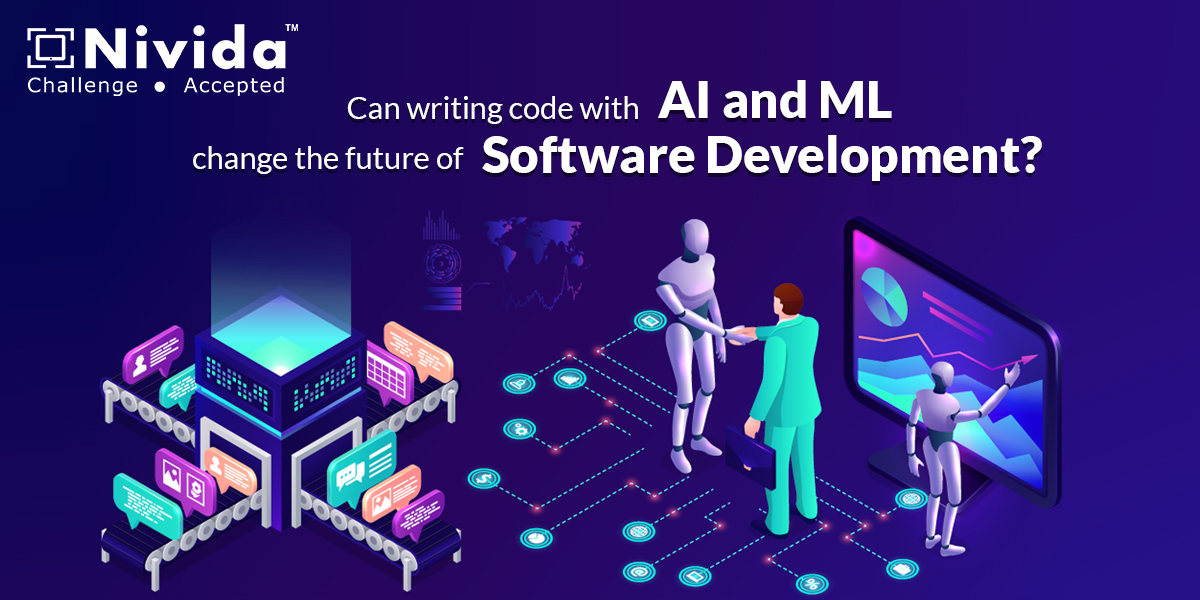Is it common for software to be developed with the help of AI and ML, or is that the exception? Do we see this as the way forward for software development? Reading this blog will allow you to delve deeper into the subject at hand.
There was recent press on a Google employee who seemed to suggest that the company's efforts in artificial intelligence (AI) were becoming "sentient," or alive.
This article provides an in-depth look at the ways in which software engineers and software developers can benefit from utilising Machine Learning (ML) and AI.
In the coming decade, the rise of ML as well as data science in the software development field will significantly alter the software development process and the entire IT sector.
It appears that machine learning is the latest fad in the field of software engineering. However, as more and more data for software development as well as cheaper processing power become available, it will become more noticeable.
The integration of numerous tools across the process of the life cycle of software delivery is a major source of headaches when developing a useful tool for use within the SDLC. Clients, software engineers, non-technical members, quality assurance engineers, product designers, configuration and deployment engineers, security engineers, production support engineers, infrastructure providers, as well as project managers all have their own unique perspectives and experiences that inform their identities.
Here is how AI and ML can help to change the future of Software Development.
Algorithms:
It was in the 1970s that the first algorithms were developed. This is mostly employed to hasten the construction or development of code by providing autonomous insights that are enabled using automated commands which are pre-programmed. A software engineer can make more informed and timely design choices with this information at hand.
Machine learning is a game-changer for software development since it allows for the advancement of algorithms, their use and adaptation in real-time, and the provision of novel insights to programmers that can increase their efficiency and the quality of their work.
Robo-advisors:
Many technology-centric firms, such as Google, encourage best practices by making important components open, such as companion bots, without fully divulging their machine learning techniques to software creation.
Many companies in the software engineering industry are looking into the use of artificial intelligence to enhance engineering decisions and to make better use of vast stores of data accumulated during the creation of software in a variety of languages, some of which are quite old.
Robo-advisors are a good example of this trend; these programmes are simply algorithms designed to speed up the process of achieving software engineering goals. Developers working in an IDE can benefit from the assistance of these automatic guides and assistants.
When a developer begins constructing lines of code, the adviser pops up and informs them of all the classes and functions they might use to check whether or not the developer is taking the correct approach to a functional or non-functional region. The system then makes all of the relevant code for that feature immediately accessible, with the best possible match as its primary goal.
Developers that are confident working in pairs without the benefit of human peer review have shown a strong preference for Robo-advisors. The GitHub Co-pilot is an example of an AI tool that can be used by engineers and developers to receive help and advice in an automated fashion.
Locating and fixing problems before they worsen:
Using machine learning for defect detection and prevention is crucial because bugs are a major issue for every software engineering development team.
In the past, defect detection systems relied primarily on a robust and complicated set of rules, which need extensive human intervention. Today, finding and preventing faults requires more than just checking boxes. It can automatically self-remediate and self-heal when certain conditions are met.
It is within the realm of software engineering functionality where bugs are most likely to be found, making machine learning the best tool for fixing them. This is due to the fact that machine learning systems are able to rapidly scan through massive databases of codes, identifying anomalous activity and immediately flagging them. Because there are so many potential points of detection at any given time, machine learning systems will likely become indispensable in the near future for bolstering test strategy as well as software development discipline. Such ML-assisted features will soon be able to automatically fix bugs in the code.
Automation:
Software development projects benefit greatly from automated processes. By streamlining common, day-to-day operations, software engineers can free up time for more meaningful projects. Money and time are saved during production, which is an additional advantage.
Automating with AI and ML can give developers yet another level of assistance. When given the right information, AI and ML may help development teams make important decisions much more quickly by providing in-depth data analysis. Collaboration and the subsequent advice on the optimal course of action can, in the not-too-distant future, even make pair programming unnecessary.
In software engineering, AI and automation can be trained to spot mistakes, speeding up the process of both finding and fixing them. This means that there will be fewer instances of team members being held up and a higher likelihood that their tasks will be completed on time and at a high standard. In the future, it is likely that companion chatbots will be developed to aid in the engineering of the whole software delivery process, involving all stakeholders.
Developer performance prediction:
Developer performance prediction will become a complex field of software delivery lifecycle as well as software development to understand the elements that motivate developers and guess the performance of their code.
Coding approaches and programming practices are used to predict developer performance. An example is a function that uses static analysis classes and interfaces.
With more software engineering data, ML and AI-based analysis will develop.
AI won't start creating code, but it will help software developers, as well as engineers, to produce better code. The software engineer may use AI in complex areas while focusing on high-value ones.
Real-time sentiment analysis:
With past and real-time data of codes, coding styles, and amounts of unstructured data such as transcriptions, videos, audio files, photos, articles, as well as codes, AI can understand and provide superior recommendations across the software delivery lifecycle.
Existing video conferencing and collaboration software often include real-time feedback. AI-accelerated insights can affect the way software engineers interact as well as use the essential functionality. ML algorithms may learn and offer relevant and changeable content, providing recommendations on emphasis areas for engineers.
Sentiment analysis in software engineering can be used to estimate budget, schedule, or effort based on functional and non-functional needs. It predicts consumer proposal behaviour and trade-offs.
The developer community reacts to a multiplicity of human-related elements and thinks machine learning may imitate and improve human software engineering intuition by detecting new trends and signals.
Future machine learning applications will focus on understanding and forecasting how needs, trends, and real-time factors like collaboration and team events influence software engineers' feelings towards writing better code.
It won't be confined to predicting better code and software engineering methods. Error management, a key area to understand and reduce SaaS downtime, can be forecasted and automated to self-remediate as well as identify without any sort of human interaction.

